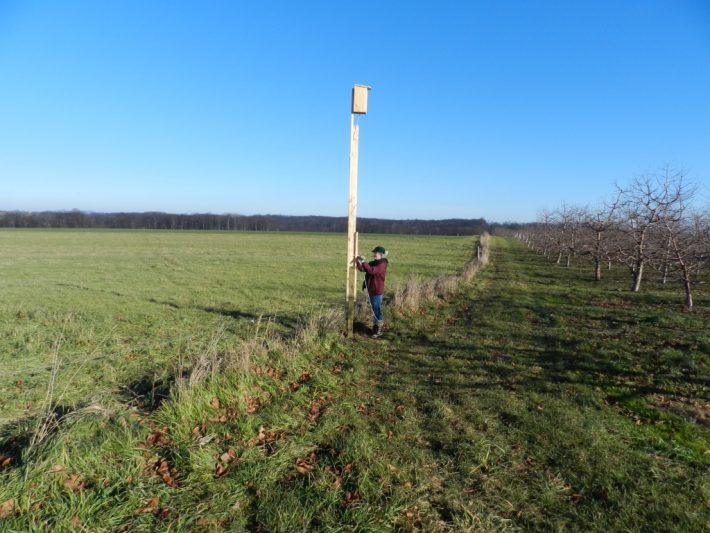Lifting the economy on hawks’ wings
National Science Foundation press release
America’s smallest raptor, the American kestrel, can boost economies in Michigan and other fruit-growing states, new research shows. It’s the first study to measure regional job creation aided by the activity of native predators. The results were published today in the Journal of Applied Ecology.

American kestrels range from Alaska to South America. They dine on bugs, small mammals and fruit-eating birds. More kestrels mean fewer pests, and the tiny hawks’ mere presence can produce measurable improvements, said Catherine Lindell, a Michigan State University (MSU) integrative biologist and study co-author. Growers can attract more of these beneficial birds by building nesting boxes.
“This research demonstrates that farmers can use science to design agricultural fields that benefit people and wildlife,” said Betsy Von Holle, a program director for the National Science Foundation’s (NSF) Dynamics of Coupled Natural and Human Systems program, which funded the research.
Lindell and her team calculated the benefit-to-cost ratios of installing kestrel nest boxes around orchards. The results showed that, for every dollar spent, $84 to $357 of sweet cherries are saved from fruit-eating birds.
To scale up the projections, the team used regional economic modeling. The models predicted that increased sweet cherry production from reduced bird damage would generate 46 to 50 jobs, which translates to a major contribution to Michigan’s economy.
“Having more American kestrels around orchards reduces the number of fruit-eating birds significantly,” Lindell said. “It’s not just a microeconomic boost that simply benefits the fruit grower — it has a macroeconomic effect that benefits the state’s economy.”
Added Von Holle, “Fruit-eating birds avoid orchards with American kestrels, so those with kestrel nest boxes end up producing more cherries. If kestrel nest boxes were used more widely, these researchers estimate, Michigan would benefit by adding new jobs and more than $2 million in increased revenue over a five-year period.”
The strategy isn’t limited solely to Michigan cherry producers. It’s a potential boon for fruit producers throughout the kestrels’ range, and is a cost-effective ecosystem service, the scientists said.
Though building nest boxes doesn’t always guarantee a booming kestrel population, “installation and maintenance costs of boxes are small, and even if box occupancy rates are low, they can direct kestrel activity to particular places in agricultural landscapes where kestrels can deter birds that are fruit pests,” said Megan Shave, MSU integrative biologist and first author of the journal paper.
Although birds make up only 2 percent of kestrels’ diets, just having the feathered enforcers in the area keeps many fruit-eating avian species out of orchards. These improvements give fruit growers another, more sustainable option to conventional pesticide-based crop protection, Lindell said.
Stephanie Shwiff and Julie Elser of the U.S. Department of Agriculture’s National Wildlife Research Center performed the economic analyses for the study.
Read the full article (submitted version):
Shave, M. E., Shwiff, S. A., Elser, J. L. and Lindell, C. A. (2018). Falcons using orchard nest boxes reduce fruit eating bird abundances and provide economic benefits for a fruit‐growing region. J Appl Ecol. Accepted Author Manuscript. DOI: 10.1111/1365-2664.13172
Media contact:
Cheryl Dybas, National Science Foundation, Email: cdybas@nsf.gov
Like what we stand for?
Support our mission and help develop the next generation of ecologists by donating to the British Ecological Society.